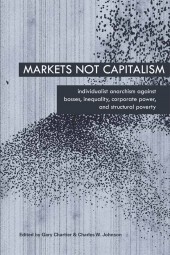In recent weeks H.R. 875 (Food Safety Modernization Act of 2009) has occasioned the expression of a considerable amount of alarm on the Internet. The bill, it is variously said, will outlaw organic farming, criminalize seed banks, and do to community-supported agriculture what the CPSIA (Consumer Product Safety Improvement Act) does to small apparel and toy manufacturers. It will impose costly inspection and certification regimes on even the smallest producers. It was introduced by Rosa Delauro, whose husband is supposedly a Monsanto employee, and is an attempt to use the regulatory state to suppress competition from small-scale organic producers.
On closer inspection, it’s probably not anywhere near the bogeyman it’s being made out to be. Tom Philpot at The Gristmill, who is a pretty reliable source on issues involving collusion between the USDA and big agribusiness, dismisses it as a tempest in a teapot. Most of the worst alleged features of the bill, as attributed to it by the wild surmises of the blogosphere, simply aren’t found in the bill itself. Even the bit about Delauro’s husband and his ties to Monsanto, it turns out, is a wild exaggeration.
But we probably dodged a bullet, in any case. If most of the conspiracy theorizing is unfounded in this particular instance, we still have every reason to be suspicious until proven wrong, and to remain vigilant against legislation that really does such things. The danger that any federal safety regime for agriculture will embody such features is very real.
The simple fact of the matter is that most food safety regulations, in classic Baptists-and-Bootleggers fashion, are written by the big producers and have the primary effect of imposing minimum overhead costs on small producers.
The primary offenders in the food contamination scares of recent years have been large-scale agribusiness operations and large-scale food processors, whether in California or in China. The spinach e. coli deaths associated with “organic farming,” for example, actually occurred at a nominally organic factory farming operation producing for Earthbound Farms, where crops were contaminated by fecal runoff from the grain-fed cattle at yet another factory farming operation nearby.
But if the USDA ever takes large-scale regulatory action to address the problem, you can be sure it will be a costly and paperwork-intensive inspection regime that the factory farms actually causing the problem can easily absorb, but that will destroy small, community-based market gardeners who weren’t killing anybody in the first place.
That’s exactly what happened with the above-mentioned CPSIA, in a different industry. In response to scares of phthalate and lead contamination in toys and clothing imported from China, some consumers started buying handmade toys and clothing produced locally in people’s homes, in order to have a better sense of where the stuff they purchased actually came from. People attempted to take back control of their lives from distant and unaccountable corporations, by turning instead to relocalized economies outside the corporate supply chains.
But what did Congress do to address the lead and phthalate scares? It imposed a costly testing regime whose primary effect could well be to drive the small-scale local producers of handmade toys out of business. The giant transnational corporations that farm toy and apparel manufacturing out to sweatshops in China, of course, can easily absorb the cost of mandated testing and paperwork.
As described by Eric Husman, of GrimReader blog, the small apparel industry works like this: First, you develop a couple dozen or so different designs. Then you see which ones sell, and produce them on a just-in-time basis as orders come in. This a business model that can be followed even by someone operating out of their own home with a few sewing machines. Because there’s almost no initial capital outlay or overhead, there’s also no pressure to achieve some minimum level of business to amortize the overhead cost. Consequently, there’s no risk involved in taking it up as a moonlight operation to supplement wage income and then gradually replace wage labor with self-employment a few hours at a time.
The CPSIA, by mandating test costing hundreds or thousands of dollars for every separate product line, essentially criminalized this model of production. It added enormous levels of overhead, which could only be paid for by large-batch production to spread the cost over a large number of units. In other words, if you can’t afford the initial startup capital to do it full time and on a large scale, you can’t do it at all.
That’s the central function of almost all safety regulation: to impose mandatory minimum levels of overhead on small producers.
Consider all the forms of production that are amenable to small-scale production in the home, using only the spare capacity of ordinary household capital equipment that most of us own anyway, if only government-imposed entry barriers were removed. Roderick Long, in a November article at Cato Unbound, mentioned microbakeries using ordinary kitchen ovens, unlicensed cab services with only a car and a cell phone, cooperative daycare arrangements in which parents in a neighborhood paid someone to care for children out of their home, home-based beauticians with only a chair and sink and a basic set of cutting and styling tools, etc.
Because of mandated overhead, most of society’s economic functions are carried out through the model of organization Paul Goodman described in People or Personnel: high-overhead, with bureaucratically defined procedural rules, job descriptions, prestige salaries, rents on artificial property rights, management featherbedding, and all the rest of it. The cost of paperwork and bureaucratic rulemaking, in many cases, is the inevitable result of the fact that people lacking any intrinsic motivation or control over their own work can’t be trusted to use their own judgment.
Our society is run by an interlocking directorate of enormous bureaucratic organiations: corporations, government agencies, universities and charitable foundations.
As a result, most forms of production are characterized, in Goodman’s words, by “the need for amounts of capital out of all proportion to the nature of the enterprise.” “Everywhere one turns, … there seems to be a markup of 300 and 400 per cent, to do anything or make anything.”
Their overhead costs are compounded, in addition to the initially mandated capital outlays themselves, by their bureaucratic style: the layers of bureaucratic overhead and administrative costs associated with such organizations. Compare the total charge for a service call by a plumber, most of which goes to office rent and clerical staff, profit and interest on debt, utilities, etc., to the portion that actually goes to the plumber. A skilled tradesman’s wage is typically about 40% of the cost of a service call. When we do business with each other indirectly through bureaucratic organizations, we pay a 150% markup over what we’d have paid to one another directly (for example, a plumber working through a LETS system, simply taking calls on his phone and buying materials at the local hardware store).
The effect of criminalizing such low-overhead production, Paul Goodman said, is to erect barriers to transforming one’s labor directly into subsistence, and to render comfortable poverty impossible. We often hear that the per capita GDP in Italy or Ireland is a fraction that of the U.S., and yet the actual quality of life doesn’t seem to be anywhere near that small a fraction of our own. The reason is that much of our increased GDP results, not from a proportionate increase in the value of the goods and services we consume, but from the increased ratio of overhead cost to the value of what we consume.
Suppose we decided we could meet our need for bread by baking it in our own ovens, or producing some other good in the household to exchange with a neighbor’s bread, with a fraction of the hours of wage labor required to buy it. Suppose we decided that we could meet a major part of our needs through such informal and household production, and non-monetized exchange through a neighborhood or community barter network. The portion of GDP resulting from that wage labor and the purchase of those store goods would simply disappear. But our quality of life would be improved.
Of course it would cause a lot of hand-wringing among econometrists. In the early days of the Industrial Revolution, an English political economist dismissed as “of no importance” a village which met most of its needs internally rather than by participating in the money economy. “What, sir,” thundered Samuel Taylor Coleridge. “Are seven hundred Christian souls of no importance?”
In the case of large scale mass production, the modest unit cost savings from economies of large-scale production are easily offset by all the mountains of overhead, open and hidden, required by the push-distribution system. Sloanist manufacturing, as described by William Waddell and Norman Bodek in The Rebirth of American Industry, requires enormous buffer stocks of goods in process, and enormous inventories finished goods produced without regard to orders, in order to keep the machines running at capacity and spread out unit costs over the larget possible output. To keep the wheels turning also requires expensive mass-marketing, brand-name markup of generic commodities that previously sold for 75% less, enormous consumer debt, and planned obsolescence .
Ralph Borsodi described the effort to market the output industry was capable of producing at full capacity as the equivalent of making water run uphill. His book The Distribution Age was a study of this paradox: modest decreases in unit production cost, more than offset by an explosion in the cost of distribution and high-pressure marketing.
Compare the mountains of crystallized labor and resources embodied in those inventories, and in the landfills full of discarded goods that could have been repaired for a tiny fraction of the cost of replacement, to the alleged cost savings from running the “more efficient” specialized machinery 24/7.
We live in an age of cost-plus markup and mandated minimum overhead, buying stuff from public and corporate bureaucracies for several times what they would cost to produce either in local manufacturing organized on a lean basis or in the informal and household economy. The system adds Rube Goldberg steps between effort and consumption, much like adding all sorts of baffles and eddies and reservoirs, and twists and turns, to a plumbing system. On average we force in forty hours worth of effort into one end of the system, and get a trickle of consumption goods out the other end that could probably be produced in sixteen hours if production were organized rationally without the added overhead cost and subsidized waste.







